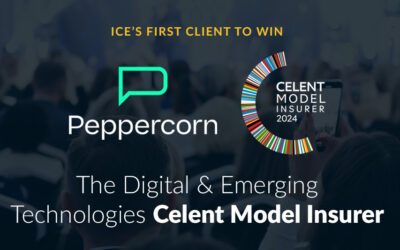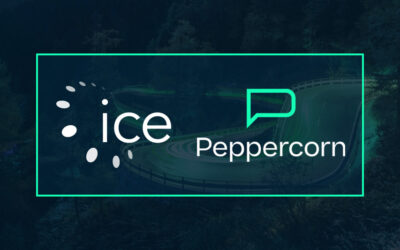Our UI-UX Whitepaper – a look at how we have adapted our UI-UX in the ICE Insurance Suite to benefit our customers.
ICE InsureTech has published a new whitepaper that highlights the importance of a high-quality, elegant user interface to positively impact our customer’s user productivity. Written by our UI/UX Architect, Matthew Norris, the full whitepaper is available from our secured downloads areas which can be accessed here.
In the whitepaper, we explore our philosophy into the key features of User Interface (UI) and User Experience (UX) that act as the human gateway into complex business functionality. We have included an extract from the white paper below.
It’s all in the detail
One of the greatest challenges of any complex enterprise system is conveying to the user the wealth of business facts required to make critical decisions, access system features and workflows, without overloading them with too much detailed information or too many options at once.
The User Interface (UI), and the User Experience (UX), are primary concerns for any application; it is a key factor in determining an applications usability and efficiency. An application that provides a responsive and intuitive UI-UX empowers user productivity.
At ICE InsureTech we made the decision to follow Google Material Design principles, an adaptable system of guidelines, components and tools that support best practices in modern user interface design.
It has allowed us to develop a clean and functional layout with a forward-looking design language that is both familiar and memorable for end users. Many applications, web-based or otherwise, do not focus enough on the user experience.
This often creates a situation where end users can feel lost, confused and frustrated by issues such as:
- Cluttered screens with every conceivable feature, whether relevant or not
- Cramping screens with details, requiring significant scrolling to view key information
- Only offering screens containing detailed information, missing the important high-level key facts that provide context
- Inconsistent layouts and use of whitespace
- Inconsistent or obscure iconography
- Inconsistent or frustrating component behaviours, lack of keyboard accessibility
- Inconsistent navigation mechanisms between screens and workflow
Look and Feel
“Look and Feel” is a phrase often used to describe the user experience, but few applications appreciate the three key principles that enable delivery of a high-quality, user-focused experience.
- Presentation
- Behaviours
- Consistency
When all three of those elements combine, as they do with our user interface technologies, the result is a polished, modern, highly usable and stable user experience.
At a glance, uncluttered summaries
ICE is designed to offer the user as much high-level information at a glance on each screen as possible, rather than having to look through multiple screens to gather key facts to complete a task.
Wherever it makes sense to do so, we use simple, crisp, and consistent icons to add further context to each concise summary text. Key areas of each screen are clearly signposted by the use of bold, consistent colour as part of our branding facilities, helping draw the user’s eye to the relevant information areas displayed at a glance.
Summaries are visible at all times, featuring a one-click drill-down capability to allow the user to see more details for any given item and initiate relevant application workflows.
At ICE InsureTech, we believe that one of the key advantages our application offers is the attention to detail invested in our user experience.
Our philosophy is that UI/UX is much more than a technological aspect of our software design.
The ICE user interface technology framework constantly innovates and evolves, embracing new technologies and design concepts. Our technology provides a single integrated enterprise and portals solution, built on a modern platform with a consistent, familiar and easy to use look and feel.
More articles
Peppercorn insurance wins first Celent Model Insurer Award with ICE
Peppercorn insurance is ICE’s first client to win the Celent Model Insurer Award for Digital and Emerging Technology. Their well-deserved success has set a new industry standard on how AI can support digital transformation in insurance.
PeppercornAI & ICE InsureTech Announce Partnership
Insurtech PeppercornAI announced their first strategic partnership with ICE InsureTech that will support rapid digital transformation in the insurance industry.
Kindertons launches its big ICE roll-out at the same time as going live on Acturis
Kindertons transforms operations with new launches powered by Acturis & ICE InsureTech, both integral companies in the Acturis Group.




